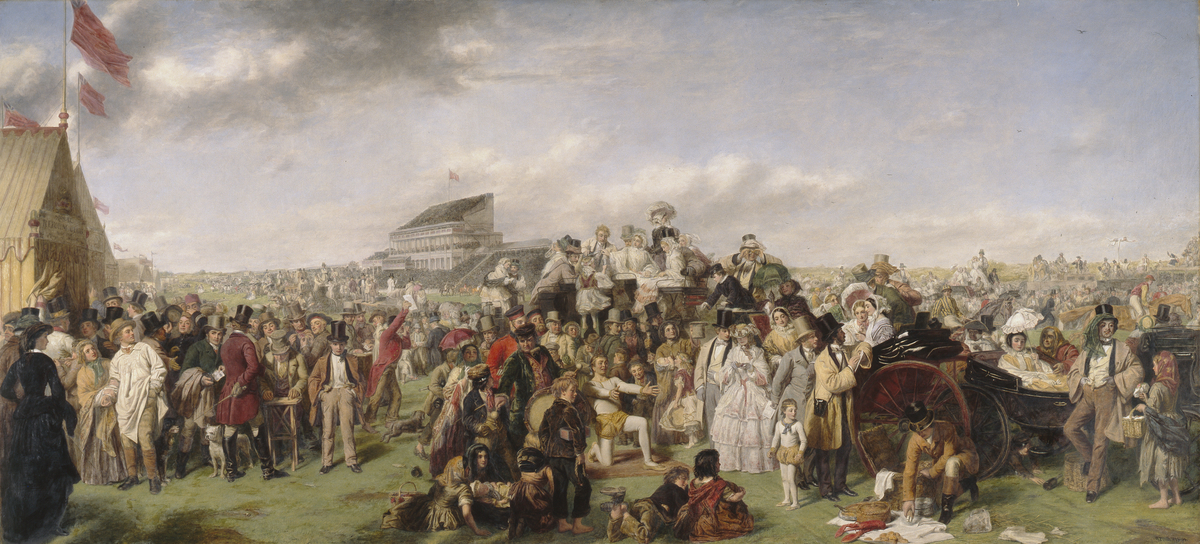The Derby Day
William Powell Frith 1819 - 1909
Summary
A panoramic detailed painting of crowds on Derby Day, the race course behind them, tailing off into the distance to the left. A tall pavilion of stands can be seen in the background, left of the centre, at the side of the course, topped with a flag. In the foreground, far left, is the nearest of a row of Royal Reform Club marquees, with red flags, which extends away from the viewer; top-hatted men make their way to the nearest entrance. A young couple in rural dress including smock stand before them, glancing to the right. A woman in black makes her way towards the group, in the middle of which is a policeman. Next to this, a group of men are surreptitiously gambling and exchanging money around a small card table, on which a man performs a conjuring trick for bets. In the centre, foreground, after a slight gap in the crowd, is a group of musicians, with a large drum and acrobats in white and yellow costume, ragged and barefoot children surrounding them to watch. Behind the musicians, is a tall coach with people sitting on the roof drinking wine. To the right of this is a wealthy group of people in two carriages, the young ladies carrying parasols. Some beggars stand nearby, a young woman holding a baby collecting money in a top hat. A servant kneels on the ground before the right hand carriage in the foreground, laying out a picnic from a wicker hamper, consisting of pies and pink lobster. A young boy reaches out from under the carriage to take a bottle of wine which has rolled behind him, while the acrobat's son stares at the array of food. On the far right, a young girl dressed in rags holds out goods from a basket to a wealthy man leaning against a carriage.
Display Label
Gallery text panel Life and Landscape High-Victorian Social and Rural Subjects The Pre-Raphaelite interest in modern life was paralleled by a more general demand for contemporary subjects. The Victorians' fascination with their growing world of new social types and changing patterns of behaviour is particularly echoed in their love of crowd scenes. Some artists tried to highlight the darker side of society by focusing on the plight of the less well off. Yet representations of the working class and unemployed are usually idealised or softened by sentimental treatment. The wealthier classes provided more popular themes in art: high society is often both celebrated and analysed in paintings of domestic interiors and social engagements. Depictions of the city and industrial activity are rare. In an age of urban degradation and mass poverty collectors sought escapism more than social reflection, which gave rise to an unparalleled market for landscapes. Typically extreme in evoking serenity or bleakness, their appeal often revolves around open-ended narratives and the presence or suggestion of human activity.
Object Name
The Derby Day
Creators Name
Date Created
1893-1894
Dimensions
unframed: 102.3cm x 234.4cm
framed: 130cm x 251.5cm
accession number
1896.4
Place of creation
England
Support
canvas
Medium
oil paint
Credit
Gift of James Gresham
Legal
© Manchester Art Gallery

